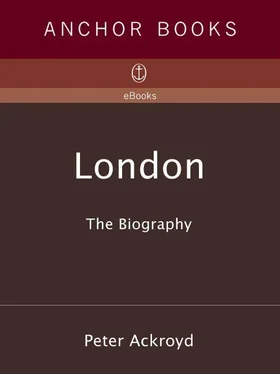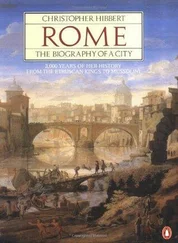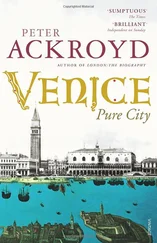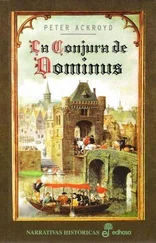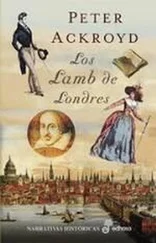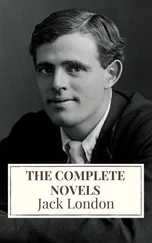Peter Ackroyd - London - The Biography
Здесь есть возможность читать онлайн «Peter Ackroyd - London - The Biography» весь текст электронной книги совершенно бесплатно (целиком полную версию без сокращений). В некоторых случаях можно слушать аудио, скачать через торрент в формате fb2 и присутствует краткое содержание. Год выпуска: 2000, ISBN: 2000, Жанр: Биографии и Мемуары, на английском языке. Описание произведения, (предисловие) а так же отзывы посетителей доступны на портале библиотеки ЛибКат.
- Название:London: The Biography
- Автор:
- Жанр:
- Год:2000
- ISBN:9781400075515
- Рейтинг книги:5 / 5. Голосов: 1
-
Избранное:Добавить в избранное
- Отзывы:
-
Ваша оценка:
- 100
- 1
- 2
- 3
- 4
- 5
London: The Biography: краткое содержание, описание и аннотация
Предлагаем к чтению аннотацию, описание, краткое содержание или предисловие (зависит от того, что написал сам автор книги «London: The Biography»). Если вы не нашли необходимую информацию о книге — напишите в комментариях, мы постараемся отыскать её.
London: The Biography — читать онлайн бесплатно полную книгу (весь текст) целиком
Ниже представлен текст книги, разбитый по страницам. Система сохранения места последней прочитанной страницы, позволяет с удобством читать онлайн бесплатно книгу «London: The Biography», без необходимости каждый раз заново искать на чём Вы остановились. Поставьте закладку, и сможете в любой момент перейти на страницу, на которой закончили чтение.
Интервал:
Закладка:
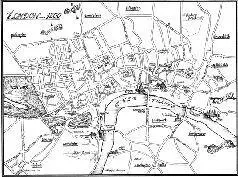
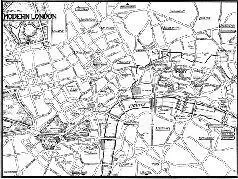
The City as Body
T he image of London as a human body is striking and singular; we may trace it from the pictorial emblems of the City of God, the mystical body in which Jesus Christ represents its head and the citizens its other members. London has also been envisaged in the form of a young man with his arms outstretched in a gesture of liberation; the figure is taken from a Roman bronze but it embodies the energy and exultation of a city continually expanding in great waves of progress and of confidence. Here might be found the “heart of London beating warm.”
The byways of the city resemble thin veins and its parks are like lungs. In the mist and rain of an urban autumn, the shining stones and cobbles of the older thoroughfares look as if they are bleeding. When William Harvey, practising as a surgeon in St. Bartholomew’s Hospital, walked through the streets he noticed that the hoses of the fire engines spouted water like blood from a cut artery. Metaphorical images of the Cockney body have circulated for many hundreds of years: “gob” was first recorded in 1550, “paws” in 1590, “mug” in 1708 and “kisser” in the mid-eighteenth century.
Harvey’s seventeenth-century hospital was beside the shambles of Smithfield, and that conjunction may suggest another image of the city. It is fleshy and voracious, grown fat upon its appetite for people and for food, for goods and for drink; it consumes and it excretes, maintained within a continual state of greed and desire.
For Daniel Defoe, London was a great body which “circulates all, exports all, and at last pays for all.” That is why it has commonly been portrayed in monstrous form, a swollen and dropsical giant which kills more than it breeds. Its head is too large, out of proportion to the other members; its face and hands have also grown monstrous, irregular and “out of all Shape.” It is a “spleen” or a great “wen.” A body racked with fever, and choked by ashes, it proceeds from plague to fire.
Whether we consider London as a young man refreshed and risen from sleep, therefore, or whether we lament its condition as a deformed giant, we must regard it as a human shape with its own laws of life and growth.
Here, then, is its biography.
Some will object that such a biography can form no part of a true history. I admit the fault and plead in my defence that I have subdued the style of my enquiry to the nature of the subject. London is a labyrinth, half of stone and half of flesh. It cannot be conceived in its entirety but can be experienced only as a wilderness of alleys and passages, courts and thoroughfares, in which even the most experienced citizen may lose the way; it is curious, too, that this labyrinth is in a continual state of change and expansion.
The biography of London also defies chronology. Contemporary theorists have suggested that linear time is itself a figment of the human imagination, but London has already anticipated their conclusions. There are many different forms of time in the city, and it would be foolish of me to change its character for the sake of creating a conventional narrative. That is why this book moves quixotically through time, itself forming a labyrinth. If the history of London poverty is beside a history of London madness, then the connections may provide more significant information than any orthodox historiographical survey.
Chapters of history resemble John Bunyan’s little wicket-gates, while all around lie sloughs of despond and valleys of humiliation. So I will sometimes stray from the narrow path in search of those heights and depths of urban experience that know no history and are rarely susceptible to rational analysis. I understand a little, and I trust that it will prove enough. I am not a Virgil prepared to guide aspiring Dantes around a defined and circular kingdom. I am only one stumbling Londoner who wishes to lead others in the directions which I have pursued over a lifetime.
The readers of this book must wander and wonder. They may become lost upon the way; they may experience moments of uncertainty, and on occasions strange fantasies or theories may bewilder them. On certain streets various eccentric or vulnerable people will pause beside them, pleading for attention. There will be anomalies and contradictions-London is so large and so wild that it contains no less than everything-just as there will be irresolutions and ambiguities. But there will also be moments of revelation, when the city will be seen to harbour the secrets of the human world. Then it is wise to bow down before the immensity. So we set off in anticipation, with the milestone pointing ahead of us “To London.”
Peter Ackroyd
London
March 2000
From Prehistory to 1066
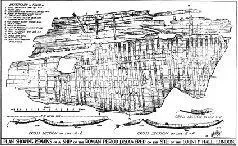
The relics of past ages have been found beneath many areas of London; they are the foundations upon which it rests.
CHAPTER 1. The Sea!
If you were to touch the plinth upon which the equestrian statue of King Charles I is placed, at Charing Cross, your fingers might rest upon the projecting fossils of sea lilies, starfish or sea urchins. There is a photograph of that statue taken in 1839; with its images of hackney cabs and small boys in stove-pipe hats the scene already seems remote, and yet how unimaginably distant lies the life of those tiny marine creatures. In the beginning was the sea. There was once a music-hall song entitled “Why Can’t We Have the Sea in London?,” but the question is redundant; the site of the capital, fifty million years before, was covered by great waters.
The waters have not wholly departed, even yet, and there is evidence of their life in the weathered stones of London. The Portland stone of the Customs House and St. Pancras Old Church has a diagonal bedding which reflects the currents of the ocean; there are ancient oyster shells within the texture of Mansion House and the British Museum. Seaweed can still be seen in the greyish marble of Waterloo Station, and the force of hurricanes may be detected in the “chatter-marked” stone of pedestrian subways. In the fabric of Waterloo Bridge, the bed of the Upper Jurassic Sea can also be observed. The tides and storms are still all around us, therefore, and as Shelley wrote of London “that great sea … still howls on for more.”
London has always been a vast ocean in which survival is not certain. The dome of St. Paul’s has been seen trembling upon a “vague troubled sea” of fog, while dark streams of people flow over London Bridge, or Waterloo Bridge, and emerge as torrents in the narrow thoroughfares of London. The social workers of the mid-nineteenth century spoke of rescuing “drowning” people in Whitechapel or Shoreditch and Arthur Morrison, a novelist of the same period, invokes a “howling sea of human wreckage” crying out to be saved. Henry Peacham, the seventeenth-century author of The Art of Living in London , considered the city as “a vast sea, full of gusts, fearful-dangerous shelves and rocks,” while in 1810 Louis Simond was content to “listen to the roar of its waves, breaking around us in measured time.”
If you look from a distance, you observe a sea of roofs, and have no more knowledge of the dark streams of people than of the denizens of some unknown ocean. But the city is always a heaving and restless place, with its own torrents and billows, its foam and spray. The sound of its streets is like the murmur from a sea shell and in the great fogs of the past the citizens believed themselves to be lying on the floor of the ocean. Even amid all the lights it may simply be what George Orwell described as “the ocean bottom, among the luminous, gliding fishes.” This is a constant vision of the London world, particularly in the novels of the twentieth century, where feelings of hopelessness and despondency turn the city into a place of silence and mysterious depths.
Читать дальшеИнтервал:
Закладка:
Похожие книги на «London: The Biography»
Представляем Вашему вниманию похожие книги на «London: The Biography» списком для выбора. Мы отобрали схожую по названию и смыслу литературу в надежде предоставить читателям больше вариантов отыскать новые, интересные, ещё непрочитанные произведения.
Обсуждение, отзывы о книге «London: The Biography» и просто собственные мнения читателей. Оставьте ваши комментарии, напишите, что Вы думаете о произведении, его смысле или главных героях. Укажите что конкретно понравилось, а что нет, и почему Вы так считаете.
